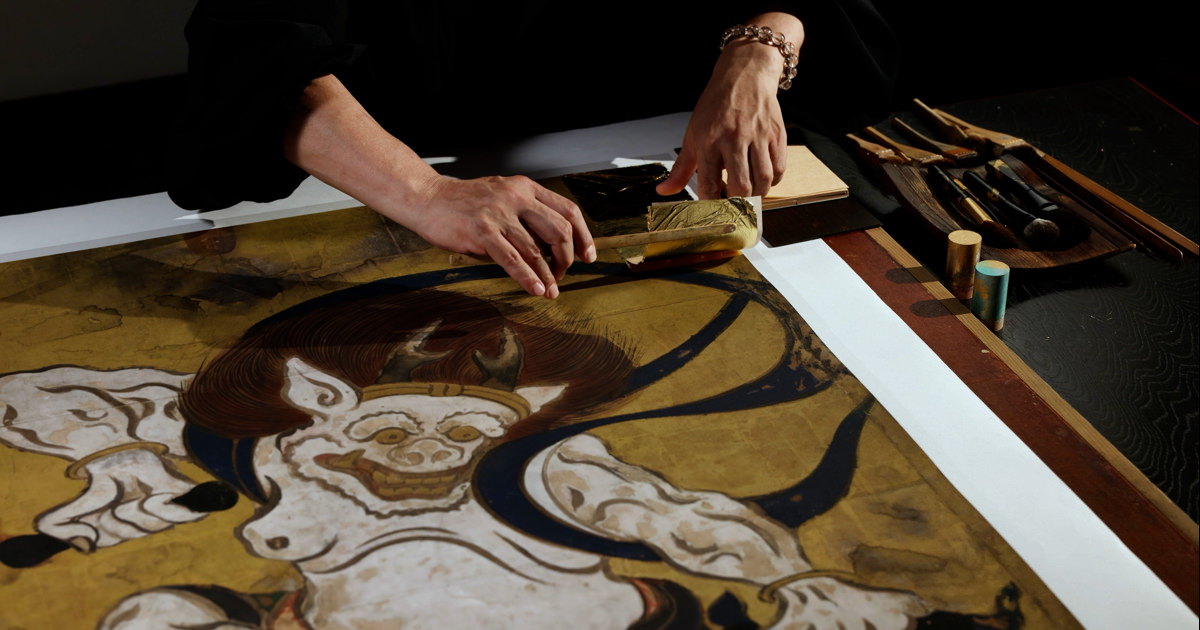Court Ladies among Cherry Trees Cherry Blossoms, a High Fence, and Attendants
Attributed to Tawaraya Sotatsu

Style of Tawaraya Sōtatsu / National Museum of Asian Art, Smithsonian Institution, Freer Collection, Gift of Charles Lang Freer, F1903.101-102
These images are based on the high resolution facsimile produced by the Tsuzuri Project. Unauthorized copying, duplication, or transfer of these images is strictly prohibited.
Court Ladies among Cherry Trees Cherry Blossoms, a High Fence, and Attendants
High-resolution facsimiles
- Material
- printed, gold on washi paper
- Period of creation
- Tsuzuri Project Stage 5 2011–2012
- Recipient
- Tokyo Metropolitan Art Museum (Tokyo Metropolitan Foundation for History and Culture)
Original
- Artist
- Attributed to Tawaraya Sotatsu
- Historical era
- Edo (17th century)
- Material
- ink, color and gold on washi paper
- Medium
- Pair of six-fold screens
- Size
- Each screen H148.0 × W371.0 cm
- Collection
- Smithsonian's National Museum of Asian Art
Description
This work depicts a landscape in which a group of aristocratic women strolls through a garden of cherry trees in full bloom. Parked nearby are ox-carts, with their attendants resting beside a high brushwood fence. The fence, which runs diagonally across the screen, adds a sense of space to the composition and marks the boundary between the outside world and the garden, which was used solely for the enjoyment of the nobility of that long-ago period. The work inherits the simplified style of composition that Tawaraya Sotatsu and his followers had established in the 17th century. Although the practice of viewing cherry blossoms originated with an observance of the nobility of the Nara period, many had originally enjoyed viewing plum blossoms at the time. This later changed to an appreciation of cherry blossoms after the planting of cherry trees in residential premises had come into vogue among the nobility during the Heian period. During the Edo period, the custom of cherry blossom viewing spread to the common people, leading to the unique scenes of Japan that, even in modern times, contribute to a sense of spring's arrival.



